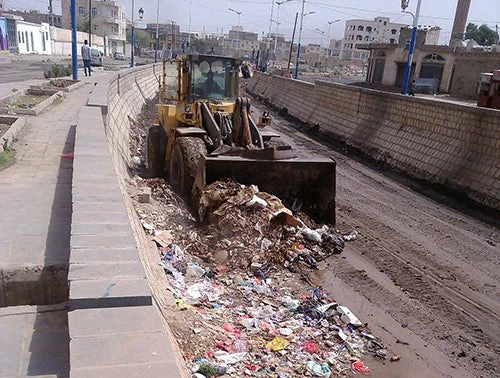
Urban Services Emergency Project. Photo Credit: UNOPS.
Delivering development assistance to FCV countries is one of the key challenges the World Bank faces today. In addition to a challenging political context, these countries are characterized by significant access and security constraints and a very volatile situation on the ground. Take the example of Yemen, a country that has been experiencing the world’s worst man-made humanitarian crisis since 2015. Four out of five Yemenis are in dire need of assistance and protection. Over 1 million people have been infected by cholera, and over 2 million people have been internally displaced.
To respond to this crisis and move from humanitarian relief to a development response, the World Bank’s International Development Association (IDA), designed the US$ 150 million Yemen Integrated Urban Services Emergency Project (YIUSEP), which aims to restore access to critical urban services in Yemeni cities impacted by the ongoing conflict. The World Bank partners with the United Nations Office for Project Services (UNOPS) –which has presence on the ground – and is working with three local entities to preserve and improve the capacity of national institutions.
To address the uncertain, conflict-affected environment, the project features the following key elements that could be replicated in similar crisis contexts:
Flexibility. To remain flexible throughout the project life cycle, the Project does not predetermine any monetary resources for its sectoral sub-components. Instead, UNOPS and its local partners develop annual investment plans based on needs, technical feasibility and citizen priorities. Moreover, the project design provides for a Contingent Emergency Response Component (CERC), which allows monetary reallocations in an emergency situation, such as a natural disaster.
Pragmatic risk management. In its partnership with local entities, UNOPS is relying on flexible procurement thresholds that can be adapted based on regularly conducted risk assessments and the performance of the local partners. While larger and more complicated civil works are initially procured by UNOPS, well-performing local partners can gradually increase their capacity to take on greater responsibilities. This incentive-based approach ensures that the Project reduces fiduciary risk while increasing local institutional capacity for service delivery.
Bottom-up citizen engagement. To ensure that project interventions address the real needs of local communities and do not exacerbate existing social tensions, YIUSEP includes a participatory, gender-inclusive investment planning process. This citizen engagement mechanism gives local communities a voice in the selection of investment projects and helps ensure that the project’s funds can adapt to changing circumstances and flow to the geographic and sectoral areas most in need of support.
Context-adapted project monitoring. Monitoring implementation progress is challenging without access on the ground. In addition to relying on regular progress reports submitted by UNOPS and national institutions, the project uses a third-party monitoring agent for independent verification of project and safeguards implementation. All subproject information, such as type of activity, geographic location, value, contractor, beneficiaries, and progress status, is also uploaded to a publicly available and regularly updated digital platform. The platform serves a double purpose: On the one hand, it allows the project team to visually track progress; on the other, the public disclosure of project information promotes transparency and accountability.
Early results of this approach are encouraging. For example, the Project has improved energy supply and efficiency of Sana’a’s largest public hospital by installing off-grid solar energy systems, replacing around 6,000 indoor LED lamps, and supplying street and outdoor lighting. Other successful interventions include solid waste cleaning campaigns reduce health hazards and improve quality of life, as well as neighborhood-level projects, such as stone paving, which improve services and provide temporary local employment.
Operating in FCV environments poses unique challenges for development practitioners. By building flexibility, pragmatism, citizen engagement and context-adapted monitoring into a project, development practitioners can proactively address the uncertainty of a dynamic conflict situation and deliver results for those most in need.



Join the Conversation